Join More Than 50,000+ Subscribers and get latest camera news and rumors
NEW CAMERA VIDEOS ON YOUTUBE
|
By admin, on May 28th, 2019
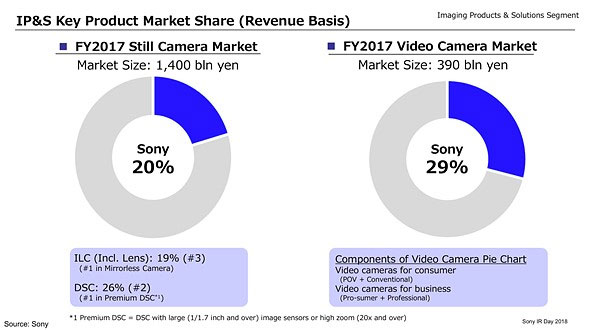
Sony is not only limited to mainting #1 spot in mirrorless market, its camera business is also increasing. According to latest reports coming from Sony recent press conference, Sony claims they now have 24 percent of the global still camera market based on revenue.
Reports suggest, compact camera market of Sony increased from 26 percent to 29 percent in 2019. Moving them to the number one spot globally.
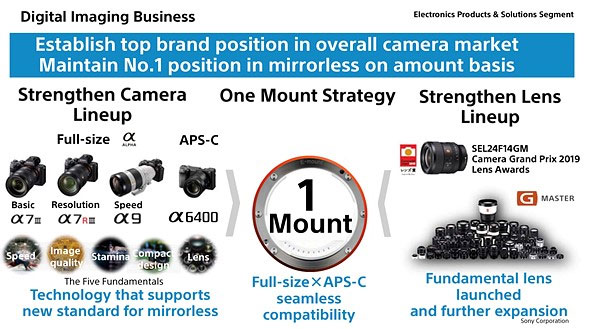
Sony proudly advertising 1 Mount for all for their mirrorless camera. Since, Fullframe and APS-C Mirrorless cameras are using the same E-Mount. Canon is lagging behind since they now have different mount for APS-C (EF-M) and fullframe cameras (RF-Mount). Nikon will be soon introducing their APS-C Mirrorless line-up. And we are waiting to see what type of mount they select ? same as of FF Mirrorless (Z-Mount) to maintain the versatility of DSLR era or they are going up with different mount just like Canon.
Follow us on our social pages FACEBOOK | TWITTER | INSTAGRAM, If you have time –>see more Sony Alpha Rumor
source
By admin, on May 27th, 2019

According to latest rumors, Sony is preparing to announce a new E-Mount related product in the beginning of June 2019.
So, it’s camera or lens we don’t know at the moment.
This is not the first time, we are continuously getting hints from rumor mill about Sony June announcement. See here and here..
BTW, all these info’s are coming without any product name / specs, only plain hints. So, Take this information with grain of salt.
Follow us on our social pages FACEBOOK | TWITTER | INSTAGRAM, If you have time –>see more Sony Alpha Rumor
source
By admin, on May 24th, 2019
Panasonic is expected to announce a new camera on May 31. Rumor mills says that it’s a L-series related announcement, but we are still waiting for confirmed set of news from trusted sources.

BTW, Panasonic GH6 is also rumored to announce at the end of 2019, let’s see what coming up next.
We will update you soon as we get any new information.
Check out Ongoing Featured and Lightning Deals at Amazon.com | Amazon.UK | B&H Store
Follow us on our social pages FACEBOOK | TWITTER | INSTAGRAM, Or subscribe us via Email or Push Notification You Can also Download our Android App
By admin, on May 21st, 2019
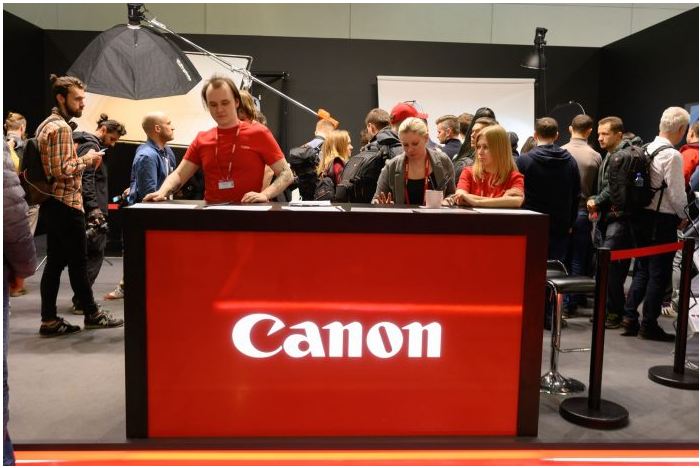
In an interview Canon representatives, clearly told photo.ru the real reason behind the 4K cropped mode of the Canon cameras and much more…
Major Points of the interview
1. Reason Behind Canon Cropped 4K video mode in Canon Cameras
Canon do not want Kill their Cinema Lineup by putting class leading video specs in DSLR or Mirrorless.
We can put 4K from a full frame in the SLR and mirrorless, but we do not want to “cannibalize” our own video segment.
2. Why Canon 200D II / SL3 / 250D have a weak video mode, cropped 4K without DPAF support ?
Canon entry level users can’t afford 4K editing software and hardware like Macbook Pro preferably with Adobe Premiere by subscription. So, they want to treat the 4K video mode as marketing feature only.
3. In next 5 years, they have a plan to announce High Resolution Mirrorless camera.
4. No clear answer given when asked about Canon announcement before Olympics
5. When asked about built-in image stabilization inside Camera Body
We already have three patents on IBIS – on a mobile matrix and stabilization, Canon is currently developing a matrix stabilization technology – it will be coming soon. Other companies had a huge amount of problems with this. They test it essentially on users.
Fortunately here at thenewcamera.com we have published three different patents of Canon working in built-in image stabilization system See patent 1 | patent 2 | patent 3
Detailed Part – Translated Interview
….do not digest the marketing policy of the company. Why, for example, in one of the new C anon cameras – neither in the flagship, nor the middle or entry level, is it not possible to record 4K video without a crop? The company is technologically unable to carry out this task?
– We did not set such a function intentionally. We have a series of Cinema EOS – movie cameras. Canon separates EOS R and Cinema EOS from each other. This series is aimed at shooting a professional video. Camera Canon C700 – there certainly is 4K from the whole frame.
We can put 4K from a full frame in the SLR and mirrorless, but we do not want to “cannibalize” our own video segment.
………
The new Canon 250 D camera couldn’t be able to drag Cinema EOS users to yourself if you gave it Dual Pixel autofocus in 4K and at the same time read it without an additional matrix.
– 250D is an Entry segment camera. We all know that in order to process 4K, on the one hand, in addition to the camera that can shoot it, there must be a computer that will be able to live through it, mount it and render it. Macbook Pro preferably with Adobe Premiere by subscription for 1500 rubles per month. How many entry-level camera users have this extra equipment? Probably not enough. Negligible. Therefore, I would treat 4K in the Entry segment as a marketing feature, which is nice to see with the eye on the box, on the price tag, and buy a 4K camera and never use it.
What is the resolution of the RF lenses?
– We learn in 5 years.
Could it be that the company is already testing a new camera, which will later be announced, for example, before the Olympiad?
“I’m sure Canon is already developing next-generation cameras, because testing usually starts at least a year before the camera enters the market.”
And when does testing end?
– A few months before the camera announcement. We have a very serious program of ambassadors, a very tough selection. Canon has the whole EMEA region – the whole of Europe, the whole of Africa, the Middle East and Russia – only 40 people. These are people with publications, participants of professional exhibitions of various genres, people who have really proved their professionalism, and we are working with them on testing
Why is the matrix stabilization not developed yet?
– We already have three patents on IBIS – on a mobile matrix and stabilization,
but we continue to work on them. Canon never uses technology that has not yet been tested. It took us so much time, because the technology itself requires a very detailed study, because the moving matrix is good, on the one hand. On the other hand, go to any service and ask how many cameras they have there with broken moving dies. The stabilization system is a very fragile thing.
Canon is currently developing a matrix stabilization technology – it will be coming soon. Other companies had a huge amount of problems with this. They test it essentially on users. Why do they have stabilization on almost all lenses? Because the matrix is not very effective.
Help us Directly We are at Patreon
Get Your Products through our affiliates – Amazon | B&H
Stay with us on FACEBOOK | TWITTER | INSTAGRAM to get live news + Canon rumors 24X7
source Photo.ru
By admin, on May 21st, 2019
We are having Canon 32MP DSLR Rumor for a while. Some rumor mills are claiming that it’s Canon 90d or 7D Mark III camera.
Let’s talk about the set of of authentic information we have related to Canon professional APS-C DSLR camera.
The only state of reliable information we have is Canon is testing a camera 32 megapixel sensor and a battery which is found inside the Canon 7D series camera on the Canon 5D Mark 4 camera.
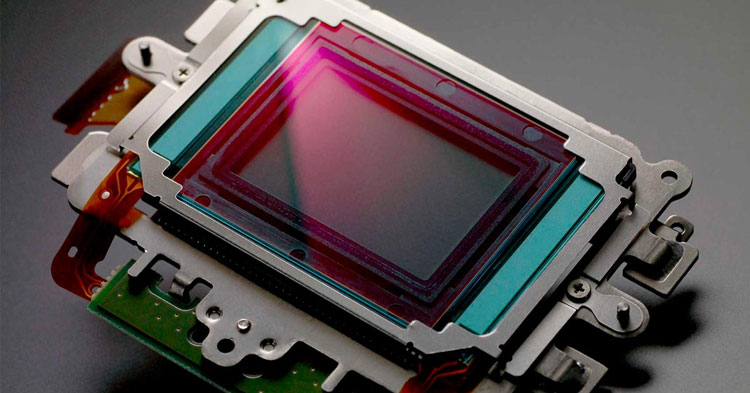
Canon 32MP DSLR – Initial Confirmed set of specification
- Digital SLR
- Wifi and Bluetooth 4.1
- LP-E6N battery
- 6 level battery display, similar to the EOS 5D Mark IV
- Maximum image size: 6960 × 4640, 32MP
- This will likely be a 2019 release
It’s very clear indication that Canon is testing a professional APS-C DSLR camera, now it all depends upon Canon marketing time which professional body they choose (Canon 7D III or Canon 90D ) for the introduction of the new 32 megapixel dual pixel auto-focus sensor. Most probably they can prefer the Canon 90d camera or they can choose Canon 7D Mark III for the introduction of their new sensor.
Let’s talk about the possibilities and let’s try to think in canon way.

Canon 7D Series Announcement Timeline
Canon 7D – Aug 31, 2009
[10, 11, 12, 13, ] (Years of gap)
Canon 7D Mark II – Sep 15, 2014
[15, 16, 17, 18 ] (Years of gap)
Canon 7D Mark III – Scheduled Release Date 2019
As you can see the Canon is keeping four years of gap in 7D series camera. And the schedule update time of 7D series camera falls somewhere around Q3 and Q4 of 2019.
Canon XXD Series Announcement Timeline
Canon 70D – Jul 2, 2013
[ 14, 15 ] (Years of gap)
Canon 80D – Feb 17, 2016
[17, 18 ] (Years of gap)
Canon 90D – Scheduled Release Date 2019
Now, as you can see Canon is keeping 2 years of gap in canon xxd series camera. Schedule update time of XXD series camera falls somewhere around Q2 and Q3 of 2019. So, more or less both Canon 7D Mark III and Canon 90D camera are waiting for their announcement based on scheduled update cycle of each camera.
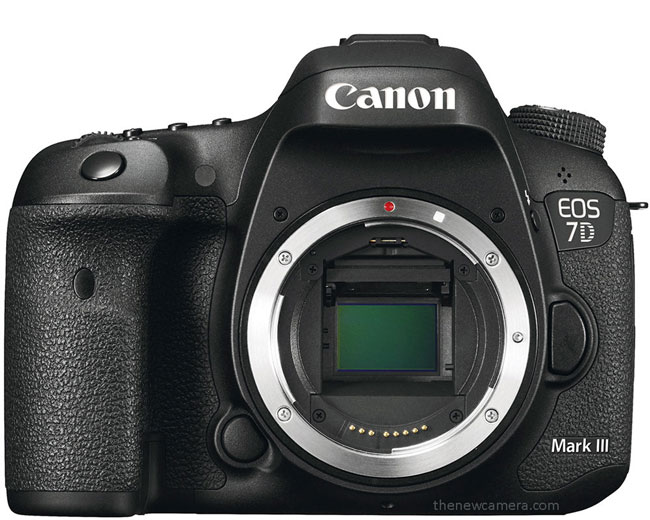
Canon 7D Mark III Coming first, If Canon moves in the same path…
We have seen what Fujifilm is doing with their Fuji XT x series and XTxx series. If Canon moves in the same path as of Fuji and Sony is moving, they will introduce their flagship camera first (aka Canon 7D Mark III) and after seven to eight months of gap once the sales number are reach to a desired level then they will going to introduce bit affordable body (Canon 90D) with some trim down specification, while having the same sensor and image processor to reach more number of peoples, those who are not able to afford the professional body with higher price tag.
Same with Sony, they have introduced the Sony A73 camera while having the same core specification of Sony A9 camera at an affordable price tag to reach more consumers out there, those who are not able to afford Sony A9 camera.
Canon EOS R – Sep 5, 2018 ($1999 at Amazon.com)
Canon EOS RP – Feb 14, 2019 ($1299 at Amazon.com)
Canon is also doing the same job, first they have planned to introduce the Canon EOS RP, and Canon EOS R camera all together at the same time, just like the Nikon Z6 and Z7. But, rumors suggest their marketing team decided to obtain a new route as of other mirrorless makers. And as usual, they have first introduced the Canon EOS R camera and after 5 months of gap they have introduced the Canon EOS RP camera with an affordable price tag.
So if you’re looking at the strategy of this mirrorless maker, their first intention is to generate profit and the second intention is to gain more market shares. – TNC
So, if Canon is moving in the new path, for sure we will be having our Canon 7D Mark III camera first and after 7 to 8 months of gap once the sales number of Canon 7D Mark III camera reached to desired level, they will going to introduce affordable 7D Mark 3 camera under the Canon 90d body.
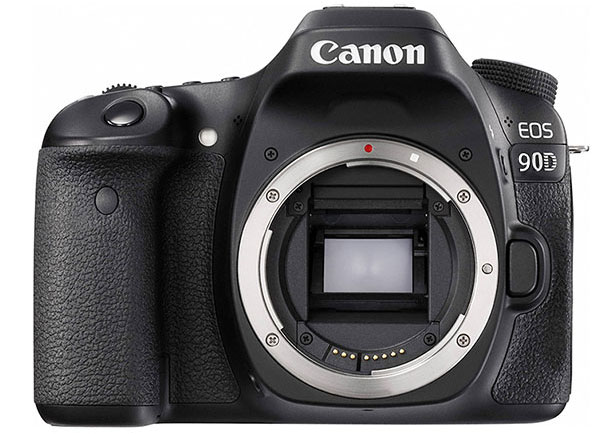
Forced Limits to Save-up Future Model Sales ?
Everyone knows Canon is bit popular in-putting forced limits in their camera. None of the Canon APS-C DSLR or mirrorless camera with dual pixel CMOS autofocus sensor is allowed to do AutoFocus in 4K, you can say allowed to use dual pixel CMOS autofocus technology while recording 4K video just to save the future sales about the upcoming flagship camera.
So if they have plan to introduce the Canon 90d camera first with 32 megapixel dual pixel autofocus sensor, for sure the camera will be having some forced limits inside to save the sales of Canon 7D Mark III camera.
Do share your thoughts with us
Check out Ongoing Featured and Lightning Deals at Amazon.com | Amazon.UK | B&H Store
Get LIVE RUMORS –> FACEBOOK | TWITTER | INSTAGRAM to get live news + Canon rumors 24X7
By admin, on May 19th, 2019
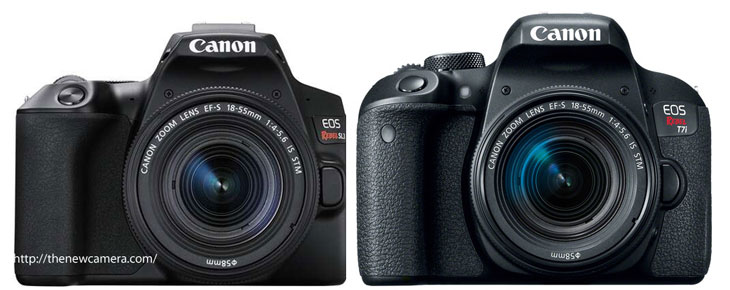
Canon 200D II / SL3 vs Canon 800D / T7i – We have done a specification comparison review between these two camera. Let’s find out which is best for you.
Sensor and other specification
| Imaging |
|
| Lens Mount |
Canon EF-S |
|
Canon EF-S |
| Camera Format |
APS-C (1.6x Crop Factor) |
|
APS-C (1.6x Crop Factor) |
| Pixels |
Actual: 25.8 Megapixel
Effective: 24.1 Megapixel |
|
Actual: 25.8 Megapixel
Effective: 24.2 Megapixel |
| Maximum Resolution |
6000 x 4000 |
|
6000 x 4000 |
| Aspect Ratio |
1:1, 3:2, 4:3, 16:9 |
|
1:1, 3:2, 4:3, 16:9 |
| Sensor Type |
CMOS |
|
CMOS |
| Sensor Size |
22.3 x 14.9 mm |
|
22.3 x 14.9 mm |
| Image File Format |
JPEG, RAW |
|
JPEG, RAW |
| Bit Depth |
14-Bit |
|
14-Bit |
| Image Stabilization |
Digital, 5-Axis (Video Only) |
|
Digital, 5-Axis (Video Only) |
The sensor size, megapixels are almost same and even the ISO range of the camera is exactly same. Both sensor are using plain CMOS sensor tech, so more or less you will be getting same image quality from both the camera.
Exposure Modes, Metering Mode and Continuous shooting speed
| ISO Sensitivity |
Auto, 100 to 25600 (Extended: 100 to 51200) |
|
Auto, 100 to 25600 (Extended: 100 to 51200) |
| Shutter Speed |
Mechanical Shutter
1/4000 to 30 Second
Bulb Mode |
|
1/4000 to 30 Seconds
Bulb Mode |
| Metering Method |
Center-Weighted Average, Evaluative, Partial, Spot |
|
Center-Weighted Average, Evaluative, Partial, Spot |
| Exposure Modes |
Aperture Priority, Manual, Program, Shutter Priority |
|
Aperture Priority, Manual, Program, Shutter Priority |
| Exposure Compensation |
-5 to +5 EV (1/3, 1/2 EV Steps) |
|
-5 to +5 EV (1/3, 1/2 EV Steps) |
| Metering Range |
1 to 20 EV |
|
1 to 20 EV |
| White Balance |
Auto, Cloudy, Custom, Daylight, Flash, Fluorescent (White), Shade, Tungsten |
|
Auto, Cloudy, Custom, Daylight, Flash, Fluorescent (White), Shade, Tungsten |
| Continuous Shooting |
Up to 5 fps at 24.1 MP for Unlimited Exposures (JPEG)
Up to 5 fps at 24.1 MP for up to 10 Exposures (Raw) |
|
Up to 6 fps at 24.2 MP for up to 190 Exposures (JPEG)
Up to 6 fps at 24.2 MP for up to 21 Exposures (Raw)
Up to 3 fps at 24.2 MP for up to 190 Exposures (JPEG)
Up to 3 fps at 24.2 MP for up to 21 Exposures (Raw) |
| Interval Recording |
Yes |
|
Yes |
| Self Timer |
2/10-Second Delay |
|
2/10-Second Delay |
We have a lot of common specification between the two camera. As you can see in specification table the continuous shooting speed of the Canon T77 / 800D is 1 FPS more compared to Canon 200D but limited to 190 shots. With Canon 200D you are getting bit extra buffer and unlimited frames option till card is full.
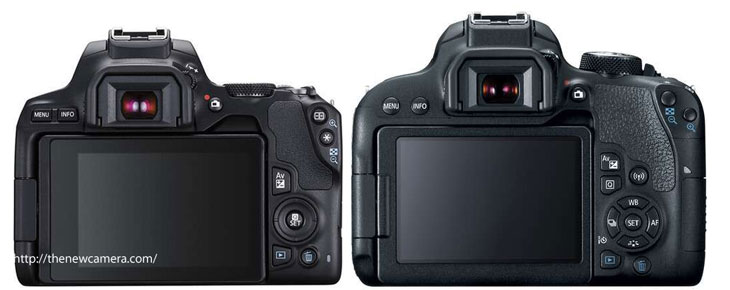
Video mode Comparison – Canon 200D II / SL3 vs Canon 800D / T7i
| Recording Modes |
MP4/H.264
UHD 4K (3840 x 2160) at 23.976p/25p [120 Mb/s]
Full HD (1920 x 1080) at 25p/29.97p/50p/59.94p [12 to 60 Mb/s]
HD (1280 x 720) at 50p/59.94p [26 Mb/s] |
|
MP4/H.264
Full HD (1920 x 1080) at 59.94p [60 Mb/s]
Full HD (1920 x 1080) at 23.976p/29.97p [30 Mb/s]
Full HD (1920 x 1080) at 29.97p [12 Mb/s]
HD (1280 x 720) at 59.94p [26 Mb/s]
HD (1280 x 720) at 29.97p [4 Mb/s]
SD (640 x 480) at 29.97p [9 Mb/s]
SD (640 x 480) at 29.97p [3 Mb/s]
MOV/iFrame
Full HD (1920 x 1080) at 29.97p [90 Mb/s] |
| External Recording Modes |
4:2:2 10-Bit
DCI 4K (4096 x 2160) at 23.976p/29.97p
Full HD (1920 x 1080) at 59.94i/59.94p
SD (640 x 480) at 59.94p |
|
|
| Recording Limit |
Up to 29 Minutes, 59 Seconds |
|
Up to 29 Minutes, 59 Seconds |
| Video Encoding |
NTSC/PAL |
|
NTSC/PAL |
| ISO Sensitivity |
100 to 12800 |
|
Auto/Manual: 100 to 12800 (Extended: 25600) |
| Audio Recording |
Built-In Microphone (Stereo)
External Microphone Input (Stereo) |
|
Built-In Microphone (Stereo)
External Microphone Input |
Canon 200D II / Canon SL3 camera features 4K video recording option and you can also record 10Bit videos via HDMI port.Canon 800D / T7i camera limited to full HD video recording mode only. However as we all know that the 4K video recording mode of Canon 800D / T7i is not so usable. Due to the crop and CDAF issue.
Canon 200D II / SL3 vs Canon 800D / T7i – Focus and other feature
| Focus Type |
Auto and Manual Focus |
|
Auto and Manual Focus |
| Focus Mode |
Continuous-Servo AF (C), Manual Focus (M), Single-Servo AF (S) |
|
Automatic (A), Continuous-Servo AF (C), Manual Focus (M), Single-Servo AF (S) |
| Autofocus Points (Phase) |
Phase Detection: 9 (9 Cross-Type) |
|
Phase Detection: 45 (45 Cross-Type) |
| DPAF Points |
3975 AF Points |
|
-Unknown |
Canon 200D II / SL3 feature revised sensor, the sensor is optimize to do more better AF performance compared to existing Canon SL2 / 200D camera. The total number of on sensor AF points are further divided 143 zones so users can select it easily without an issue.
Battery and Physical
| Battery |
1 x LP-E17 Rechargeable Lithium-Ion, 7.2 VDC, 1040 mAh (Approx. 1630 Shots) |
|
1 x LP-E17 Rechargeable Lithium-Ion, 7.2 VDC, 1040 mAh |
| Dimensions (W x H x D) |
4.82 x 3.65 x 2.75″ / 122.4 x 92.6 x 69.8 mm |
|
5.2 x 3.9 x 3″ / 131 x 99.9 x 76.2 mm |
| Weight |
15.84 oz / 449 g (Body with Battery and Memory) |
|
1.17 lb / 532 g |
Canon T7i camera features 820 shots per charge and with Canon 200D II / SL2 camera you can capture 1040 shots per charge. The 200D II is more light weight and bit small compared to 800D.
Verdict of Canon 200D II / SL3 vs Canon 800D / T7i:
Canon 200D II / SL3 camera is giving you next generation of DPAF system which will help you to get fast AF in still(Liveview) and video mode and a option to record 4K video with 10bit output . Not only that, you are also getting bit more battery life with light-weight body. We highly recommend you to go with Canon 200D II / SL3 camera.
Get Canon 800D / T7i camera from Amazon | B&H
Buy Canon 200D II / SL3 camera from B&H Store
Also see – Best Lenses for Canon 200D II / Canon SL3 / Canon 250D
By admin, on May 18th, 2019

Nikon Z6 and Z7 few units are facing some serious issue. According to Nikon, few models of Nikon Z6 and Z7 camera have faulty VR unit. So, users will not get the proper feature they are paying off.
Check out your Nikon Z6 and Z7 camera serial number
Nikon issues a Technical Service Advisory for Users of the Nikon Z 6 and Z 7 Cameras.
Nikon Press Release
MAY 16, 2019
Thank you for choosing Nikon for your photographic needs.
Issue
While Nikon has taken great measures to assure the high quality expected of Nikon products, it has come to our attention that the vibration reduction (VR) feature in some Nikon Z 6 and Z 7 cameras may not function fully. We sincerely apologize for any inconvenience this may have caused.
Resolution
Nikon has resolved this by making available corrective service for affected Z 6 and Z 7 cameras free of charge, including the cost of shipping an affected Z 6 and Z 7 camera to Nikon as well as its return, even if your Z 6 or Z 7 camera warranty has expired.
Identifying Affected Products and Requesting Service
To determine whether your camera is one of those affected, please click the appropriate Check Serial Number button below and enter the serial number for your Z 6 or Z 7 camera as indicated. If your camera is one of those affected, instructions for requesting service, including receiving your free shipping label, will be displayed onscreen. You may also contact Nikon Customer Relations by visiting www.nikonusa.com\support for assistance. If your Z 6 or Z 7 camera is not one of those affected, this will be displayed onscreen and you may continue using your camera without concern for this issue.
Check Serial Number (Z 6 camera customers)
Check Serial Number (Z 7 camera customers)
To locate your camera’s serial number, open the camera’s monitor on the back of the camera and the serial number will be the 7-digit number printed on the label affixed to the camera body, as indicated by the red frame in the image above (the Z 6 camera is represented in the image).
Please understand that Nikon will collect personal information as necessary in order to facilitate the service and shipping of affected cameras. This information will not be used for any other purposes.
Once again, thank you for choosing Nikon for your photographic needs.
|
KEEP THIS BLOG ALIVE - Support New Camera Buy Canon Lenses, Buy Music CD or Digital Camera at amazon it helps this site, and you do not pay anything extra, it is just a way to help support this site.

|

















